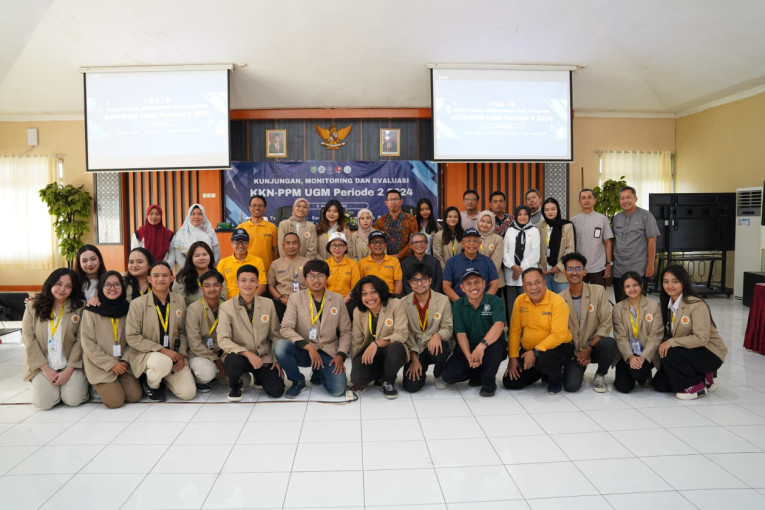
A total of 26 students from various faculties at Universitas Gadjah Mada participated in the KKN PPM program in Madiun City.
One of their flagship programs was the development of the Pecinan Heritage Area, located around Barito Street in Madiun City. This program aims to establish the area as an iconic Chinese cultural center comparable to other Pecinan areas in Indonesia.
The work program they successfully carried out was presented to the UGM Rector, the Madiun City Government, and Kagama Madiun during the KKN PPM monitoring visit at the Taman District office on Friday (Aug. 9).
Akhmad Rangga Kun Miqdammannaas Latif, Head of KKN PPM Madiun, presented the data collected by the KKN students, highlighting that Taman District has 58 potentials, divided into 11 culinary spots, 28 active MSME production points, nine agro-product points, and ten historical and cultural sites.
“The data focuses on four villages, namely Mojorejo, Pandean, Banjarejo, and Manisrejo, with an exception for historical and cultural potentials, which are spread across the entire Taman District,” Latif said.
During the visit, UGM Rector Professor Ova Emilia expressed her appreciation to the Madiun City Government for welcoming the presence of UGM KKN students to carry out their work programs in the community.
“This year marks the first time Madiun has become a KKN placement location, making it a good starting point. The big ideas brought by the students need to be seriously considered by the local government so that what they have designed can benefit the surrounding community,” Professor Emilia stated.
Professor Emilia added that UGM will develop an Information System (IS) to be monitored by the Directorate of Community Service to oversee the sustainability of KKN programs implemented across the archipelago.
“The target is that after KKN is completed, the local community will continue to carry out the programs. They can also be continued by the next batch of KKN students, ensuring that the initiated programs remain sustainable and do not stop abruptly,” she added.
Dr. Arie Sujito, UGM Vice-Rector for Student Affairs, Community Service, and Alumni, agreed with Professor Emilia.
“To ensure the sustainability of the programs, we need the support of local KAGAMA chapters and the participation of local universities, with UGM monitoring from Jogja. I am confident that alumni and local governments will always provide support,” he said.
Professor Suadi, the field supervisor, explained that the collaboration between UGM KKN students and the Madiun City Government had been well-established since their arrival in Madiun City.
“The students developed the VisitTaman website, which includes an interactive map for exploring the Taman District. This map can be used as a reference for the continued development of tourism potentials,” Professor Suadi explained, followed by the student’s demonstration of the website and interactive map.
During the discussion session, Budi Wibowo, Assistant for Governance and Public Welfare of Madiun City, acknowledged that he had received numerous reports from Taman District residents who benefited from the presence of UGM KKN.
He mentioned that all the programs carried out by the students serve as sparks that the government should seize, as they represent the seeds of creative ideas, particularly for the emergence of tourist villages in Madiun.
Kagama Madiun Chair, Professor Rahmanta Setiahadi, who was also present, suggested that the presentation on developing the Pecinan Heritage Area should be pushed for Intellectual Property Rights (IPR).
“I was quite surprised because, honestly, the creation of this masterplan possesses extraordinary novelty and is a breakthrough worth continuing. This IPR will become a footprint if the city government uses the masterplan, ensuring that the work of KKN students is not lost and can be traced,” he concluded.
In addition to creating a master plan for the development of Kampung Pecinan and a digital-based interactive map for MSME distribution and tourism potential, other flagship work programs included installing rainwater harvesting systems and planning a grape village by planting various grape varieties.
Through these activities, it is hoped that Taman District can pioneer other areas in Madiun, inspiring them with the concepts offered by UGM KKN students.
Author: Triya Andriyani
Photographer: Devi
Post-editor: Afif

